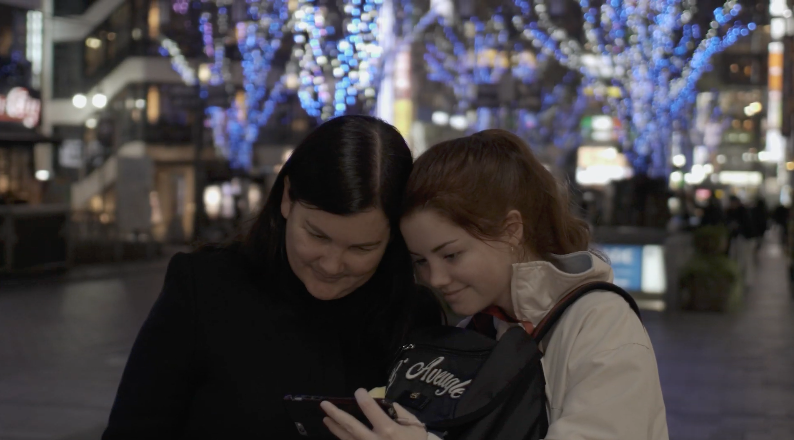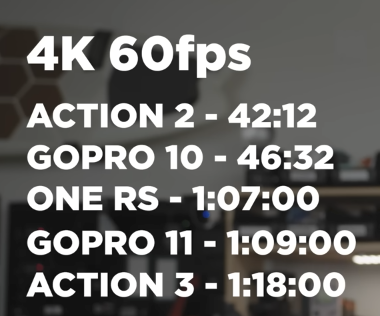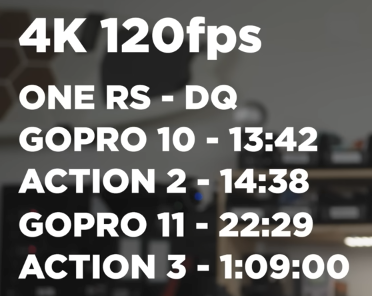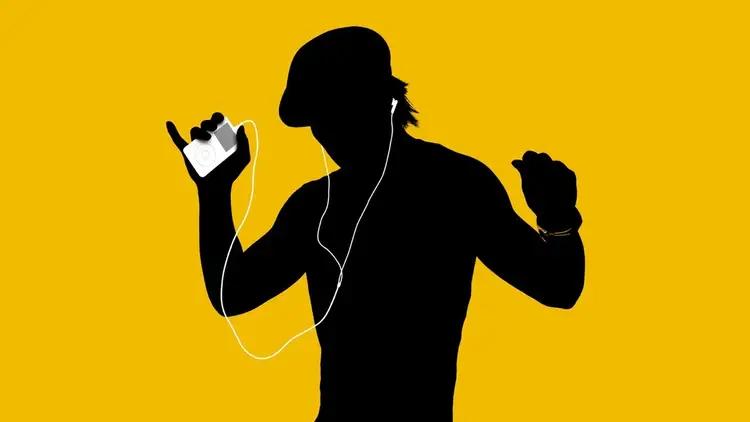-
Posts
7,995 -
Joined
-
Last visited
Content Type
Profiles
Forums
Articles
Everything posted by kye
-

Panasonic S5 II (What does Panasonic have up their sleeve?)
kye replied to newfoundmass's topic in Cameras
More sample footage from S5iiX and Sirui 150mm anamorphic lens. Nothing wrong with these images... -

Panasonic S5 II (What does Panasonic have up their sleeve?)
kye replied to newfoundmass's topic in Cameras
Just watched this again, and my impression from the YT upload was that if you'd told me this was Alexa / FX9 / RED I wouldn't have questioned it. It definitely has that high-end look. @deezid I'm curious - to get this level of image did it require being really careful with every element of production/post-production? Or was the look achievable without getting everything perfect? I find that some cameras are super-fragile requiring everything to go right and others are far more robust and much easier to work with and get good results. For me, this robustness is much more important for getting a good result rather than how good the camera is when everything is perfect. -

Panasonic S5 II (What does Panasonic have up their sleeve?)
kye replied to newfoundmass's topic in Cameras
Nice work! No video-ish look at all (I've become super-sensitive to this recently), great edit with cool subtle little moments, and nice colour grade 🙂 -
Great stuff! First thing I noticed is that it didn't look like video to me. I seem to have become very sensitive to whatever makes things look video-ish, and it is rare that YT footage shot with mirrorless cameras doesn't look video to me, but you did well! I genuinely have no idea what elements of the process make things look video-ish to me, and I'm still investigating this myself, although I suspect it's got to do with sharpening. You didn't over sharpen the video (despite me watching it on 4K) so that could have been a major factor, so well done on that! Second thing I noticed was the colour grade. Obviously if the client is happy then that's a job well done as that overrules all other considerations. That said, I thought the grade looked a bit inconsistent in terms of skin tones - some shots were more on the yellow end of the skin tone palette and others looked more towards the middle, but they weren't so different that I thought they were deliberately different. Maybe they were and beauty is in the eyes of the beholder, so these are probably just my preferences, but I noticed it, and you invited feedback. I also noticed that it was relatively low saturation overall, which might have been the clients preference, but in music videos there's a tolerance (and sometimes a desire) to have much stronger looks, so that might have been fun to see as well. Third thing I noticed was a few times in the b-roll sections (the group out walking in the street etc) where the OIS jumped. You mostly hid it with jump-cuts (which was a good strategy and suited the video) and I think you could have gone heavier on those, having more frequent cuts. I typically edit my videos to music, so am aware of the strategies of cutting to the music, and I thought the percussion of the track would have been suitable to put in some additional cuts in places.
-
Keying is likely to be the biggest place where you'd notice, but second to that it's probably related to contrast. The flatter the log profile you record in and the flatter the image is (e.g. if it's cloudy, or the subject is low contrast like when in fog) and the greater the contrast / sat you want in your final look, the more that you might notice. @newfoundmass isn't wrong when he says that it really depends on your preferences. I hang out on the colourist forums and some of them think that Alexa footage is quite fragile and that you can't push it far before it degrades. I don't know about you but I think you can push it miles and it still looks amazing, so there are different thresholds that people are willing to tolerate!
-
Easy, anyone buying a cinema camera can go modular, and anyone that doesn't buy their cinema cameras isn't serious and doesn't deserve nice or reliable equipment.
-
It does seem like the affordable end of the technology is nearing maturity... good stuff 🙂
-
I did wonder about that. There's a reason that cameras like the BMPCC 4K is so huge and the iPhone camera is so tiny, when they both have a sensor that is the same resolution / frame rates and the iPhone compresses the footage and the BM doesn't, so in theory the iPhone should require far more power than the BM. I have a vague recollection of a BM representative saying that they need to use off-the-shelf chips for their cameras because they don't have the economies of scale to make custom chips like Apple does. One of the biggest factors is that when you join chips together into the same unit they often don't take much more power than each one of them did before, plus there's all the various circuitry that was needed to send from one chip and then receive by the other one that is no longer needed if they're on the same chip.
-
I remember when voice dictation was going to free us all from having to manually press an array of buttons thousands of times to communicate anything, but then it just.. didn't. In theory, phones are perfectly suited to this, considering voice recognition is built-in and the keyboards are so bad, but it seems that people just go for shorter communication rather than switching modes. I guess with phones it is a bit strange to talk to one when you're out in public or in a shared space like the office / cafe / bathroom / etc. Maybe we need those throat-mounted microphones that black-ops soldiers have? I suspect concision is a real factor online, especially for complex topics like politics or film-making. https://en.wikipedia.org/wiki/Concision_(media_studies) Here on these forums we have a culture that is somewhat tolerant to dissenting opinions, but the burden of proof is definitely put on the person with the contrarian position, and requires either a large amount of typing or a very advanced understanding of the subject combined with extremely well developed written communication skills. I suspect in other platforms like Telegram / Discord / Facebook / etc even the people with both of these probably can't be bothered.
-
I think that's wise. My recollection was that the A7s2 was the "low light king", and that the A73 had similar/same low light performance. Before I bought my GH5 I was also considering the A73 and the low-light and other video features were a solid offering. The footage online looked very impressive too, from those that knew what they were doing. Also, the colour science on the early Sony cameras was known for being difficult, but IIRC they significantly improved it over the models, and the A73 was much improved from the earlier models, so you'd likely have a much easier time with that footage in post rather than from the A7s. With the A7s you'd probably be taking RAW stills? If so, the colour science doesn't really matter as there's no baked-in look, and you should have robust files with lots of leeway to colour them in post, including any crazy WB issues if you happen to take a shot when a very coloured light happens to be the one illuminating the scene. Have you got lenses sorted for the two?
-
I think there's two competing goals in effect with this stuff - having a technically good image and having an emotionally effective image. I say competing because one wants technical perfection and the other wants aesthetically pleasing imperfections / distortions like motion blur, image texture in the form of noise, etc. The nuance that I think doesn't get explored enough is that an image doesn't get more emotional the worse the technical aspects are, and I think people often think that's what's going on, but it's that there are very specific imperfections that are aesthetically desirable. The right quantity and type of motion, the right type and quantity of noise, the right type and quantity of overall resolution in the image. I've found that often images with motion blur, out-of-focus elements (foreground and/or background), and noise often benefit from a very small-radius blur applied to the image. The purpose of this blur is to make the in-focus parts of the image less sharp, which I think aides in the overall feel. Of course, applying the blur will also do NR, so you might want to add grain back over the top of that blur too. Your approach sounds, well, sound. It borrows lots of elements from street photography, and I know that in my shooting (mostly family holidays and travel) I have learned a great deal from street photography as its main focus is in getting optimal results with often no control of the situation at all. Quite appropriate for both family holidays and informal event photography alike! In terms of dealing with the lowest light, the tradeoff is real between ISO noise, lens aperture (wider = lower ISO but softer image, stopping down = higher ISO but sharper image), and exposure time (which is dependent on subject motion). I did tests many years ago and found that it was really camera-dependent, if you're trying to eek out that last bit of performance. Obviously you can pre-focus and find a pool of good light and a good composition, but even with that I think there's an argument to be made for stopping down as it means you're going to have more chance of getting the subject in focus. I'm not sure if you've seen these images I've posted before, but I've done quite a bit of very low light video with the GH5 and Voigtlander 0.95 lenses. This was on a boat out on the water, the only lighting was from the lights on shore, which are a loooong way from the boat: Those shots are completely mis-representative of the conditions - in real life both of them were in conditions where it was dark enough that if you were alone you'd start to be concerned about your safety because you wouldn't see clearly enough to see trouble coming and if something happened other people wouldn't be able to clearly see what was happening. I've also captured lots of shots in situations where the shot was being equally lit by the persons phone (held maybe 15" from their face) as it was by the surrounding light. I have great night vision (I can ride mountain bikes off-road without lights under a full moon) and the GH5 and f0.95 lenses can see better than I can in low-light.
-
The sensor might be smaller, and the screen will be smaller too, but all the video processing / compression and saving to SD are the same, so I don't think the sensor size is the dominant factor. If an action camera is half the size of an APSC camera then it's only got a quarter of the surface area. Your RX100 is a great counter-example - tiny sensor size (same as some of those action cameras) and overheated anyway. Seems like it's a Sony thing with them just cramming as much stuff in and saying "you didn't buy a Venice, just be thankful we sold you a camera at all".
-
Cool shots! I saw some had the longer exposure time, which suited the situation well as it showed the motion. I think motion blur in photos is highly under-rated as it removes the movement of the moment, which often is a critical aspect of the situation - a 1/5000s shutter freezes the dancing and the longer you look at the image the more the people look like mannequins who are motionless rather than there being life in the shot.
-
Yeah, that sounds like a difficult environment, and F1.4 is only a stop better than your current lenses which isn't that much in the grand scheme of things. You can also slow the shutter down to 270 or even 360 degrees, which will make the footage more surreal, but that's how weddings are anyway, so it might be a nice effect, especially on wide shots where the motion-blur wouldn't be so large compared to the size of the frame. @MrSMW may have some additional advice, but I've heard of people resorting to adding their own lighting in such situations. A couple of strategically placed Lume Cube style lights might make up the difference perhaps? IIRC I've heard wedding videographers say that if you use small lights with a hard light then people seem to ignore them much more than bigger lights or light panels, plus those ones are battery powered so could literally just be placed somewhere up high. They wouldn't last long, but you probably only need to record for 5 minutes to get a few usable shots.
-
Not all small black cameras have these issues. Here's a test of a bunch of small black cameras: He did the tests in a room at 75F/23.9C and he cooled them down to 80F/26.7C before starting the test. Results: Looking at some of these results, I'm not sure your theory stands up. Comparing them to the Sony, these are obviously smaller sensors, but heat management is about power consumption vs surface area, and these all have MUCH smaller surface areas than a MILC like the Sony.
-
If it's an option for you, there are a bunch of really fast manual primes for MFT available for ridiculously small prices now, especially from TTartisans: https://ttartisan.myshopify.com/collections/aps-c-lenses?sort_by=created-descending&filter.v.price.gte=&filter.v.price.lte=&filter.v.option.mount=M43 I've got the 17mm F1.4 and the 50mm F1.2 and they're basically the same level of optical performance as the (much more expensive) Voigtlander F0.95 MFT primes. The F1.4 lenses are two stops faster than a F2.8 lens and at the native ISO800 on the BM cameras is almost as much low-light advantage as having a second native ISO (the second ISO on dual-native ISO cameras are often only 3 stops above the base one).
-
I remember one of the first experiments we did in school teaching us about doing experiments. We got two tin cans, put a hole in each of them, put a thermometer in each to read the internal temperature, and then wrapped one in black paper and one in white paper. Then we put them in the sun and took temperature readings over something like 30 minutes. The black container internal temp shot up quickly, and it felt hot to the touch after only a few minutes, but then the temperature started to plateau. The white one started much more gradually, but slowly and surely kept rising. Every minute we took readings and drew graphs of both of them. We were able to compare the two graphs and IIRC the white one was following the same curve, it was just slower. By the end of the experiment the white one had almost caught up to the black one. The colour delays the rise in temp, it doesn't eliminate it. Maybe that is enough difference to get the shot rather than not getting it, but it's not a permanent solution.
-
No specific advice from me, but what you've said above sounds reasonable. I'd just say that if you can do any testing beforehand then that's something that always pays dividends. If you need any help in grading things afterwards then just ask, happy to take a look and help if I can. I'd imagine the client would expect the video to look similar to the photos? If so, I'd suggest trying each mode in your tests beforehand and see what the default profiles look like under those conditions so you can choose the optimal one.
-
-
Wow.. I thought the overheating issues were likely when the camera was in the sun (which definitely heats black objects) but that was in the shade..... Yeah, lots of people are going to buy this camera and then find themselves with a new appreciation of using their phone.
-
In theory, yes, these things are all true, but not for this camera. Here's the video posted earlier by @SRV1981... check out the outside testing. In case you don't want to watch a couple of minutes of video, here's the results: Tested in North Carolina in mid-morning 80F and humid, in direct sun Tested from cold in AC all night Tested in 4K XAVCS, auto temp set to high, screen open Tested at 24p Overheated in 22 minutes Let me summarise: camera is not reliable. Will it work for some people in some conditions? Sure. Will it work for you? No way to tell. There's no way I'd buy a camera like this, because you would have to know you can't record with it in the sun (even at indoor temps!), or in a hot building, or at 60p, etc etc
-
IKR... and for those long voiceovers that you get from interviews, well, that's AI isn't it. Maybe that's the end-game... Sony cameras: Recording times ready for AI™
-
Meanwhile, I'm 14 hours into the recordings of a 20hr course done over Zoom to people all over the world on combining blending modes and alternative colour spaces to get better colour grading in Resolve. Yeah, things have moved on just a bit! Not much support for Jacobs Ladder when cutting S16 🙂
-
One saying I keep reminding myself and other people of is "Can doesn't mean should, and should doesn't mean will". Just because you can do something doesn't mean you should... otherwise we'd all have to murder everyone. Or, if you decide that's a ridiculous example (and you might be right) then I guess you'd better stop reading and go pick fruit somewhere for minimum wage, because if you don't then you're "leaving money on the table".
-
The thing I find funniest is that people seem to think shooting long clips = watching long clips. It's like they've never heard of editing.









